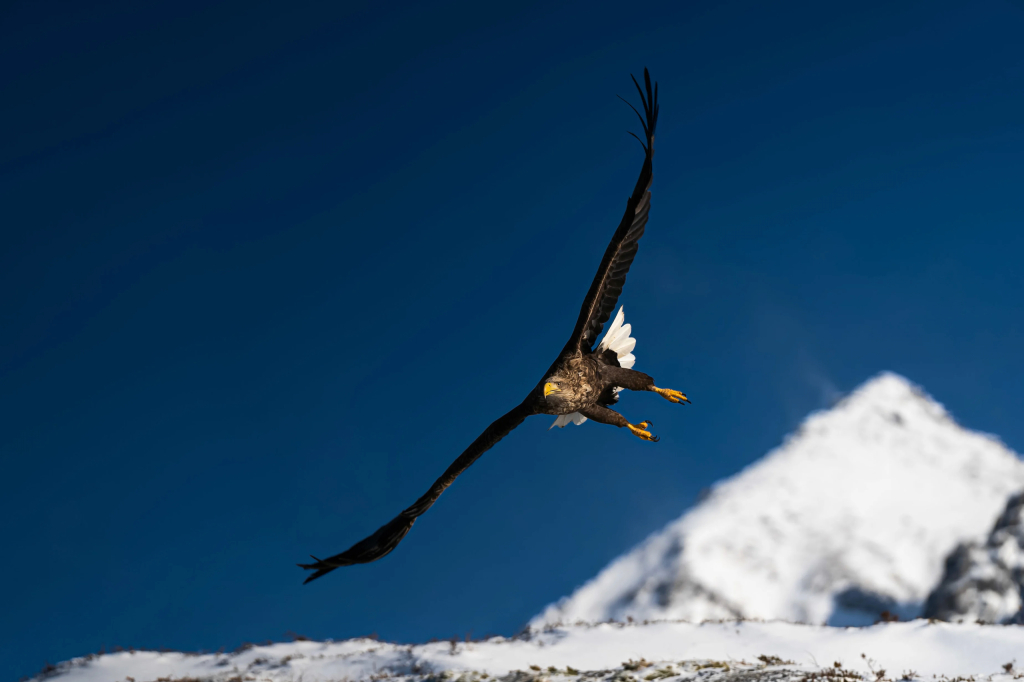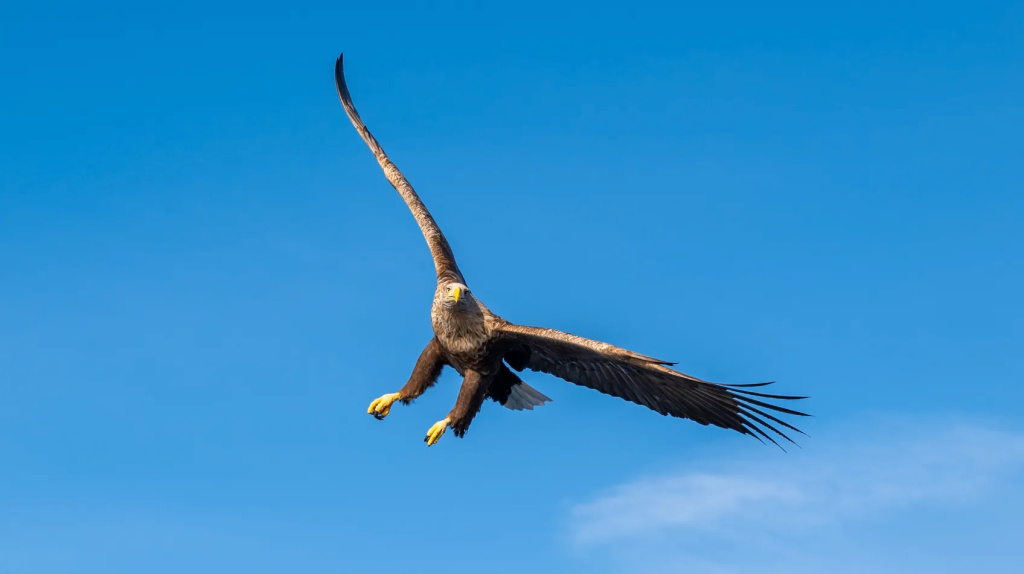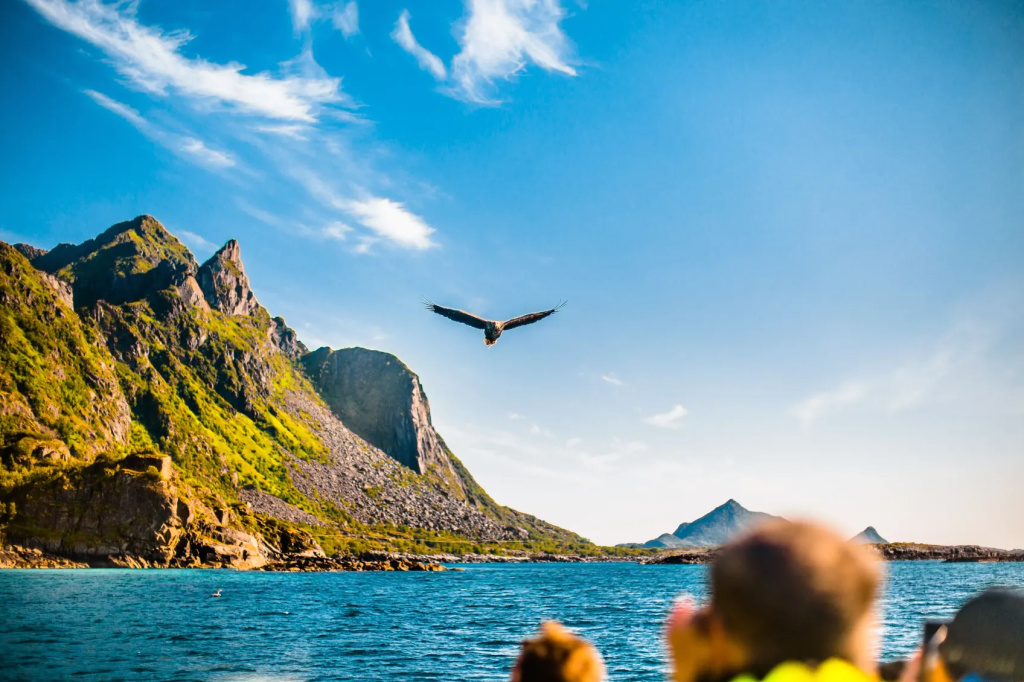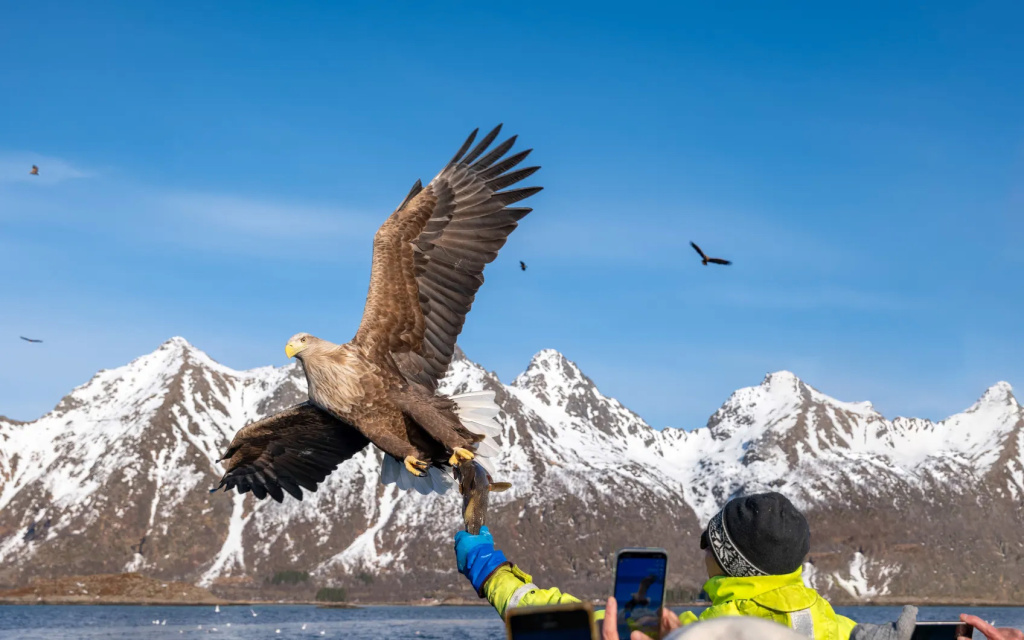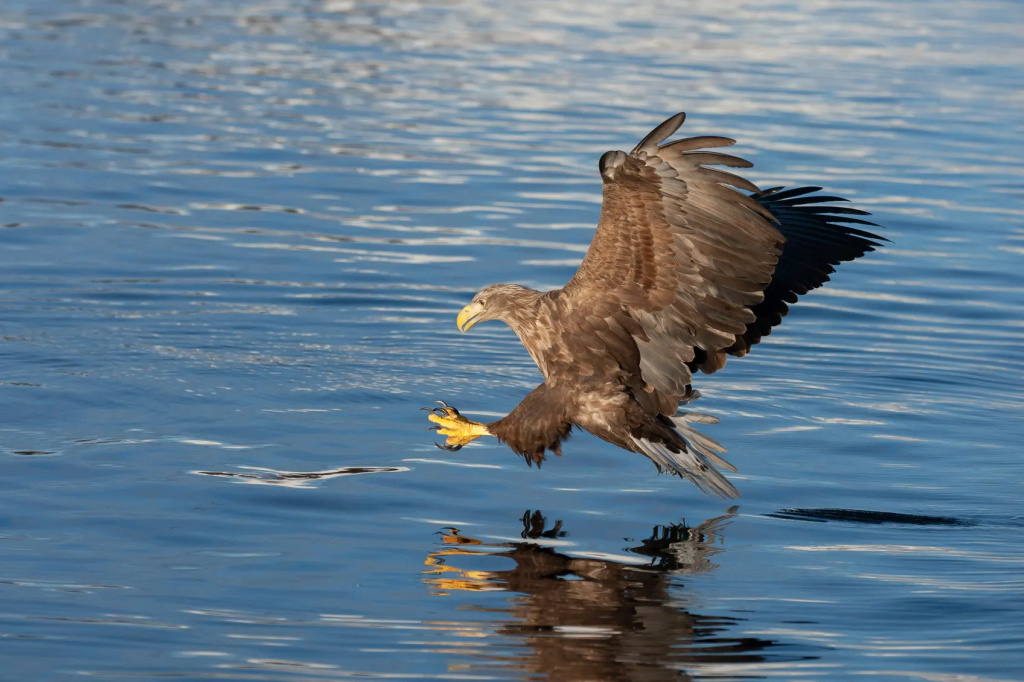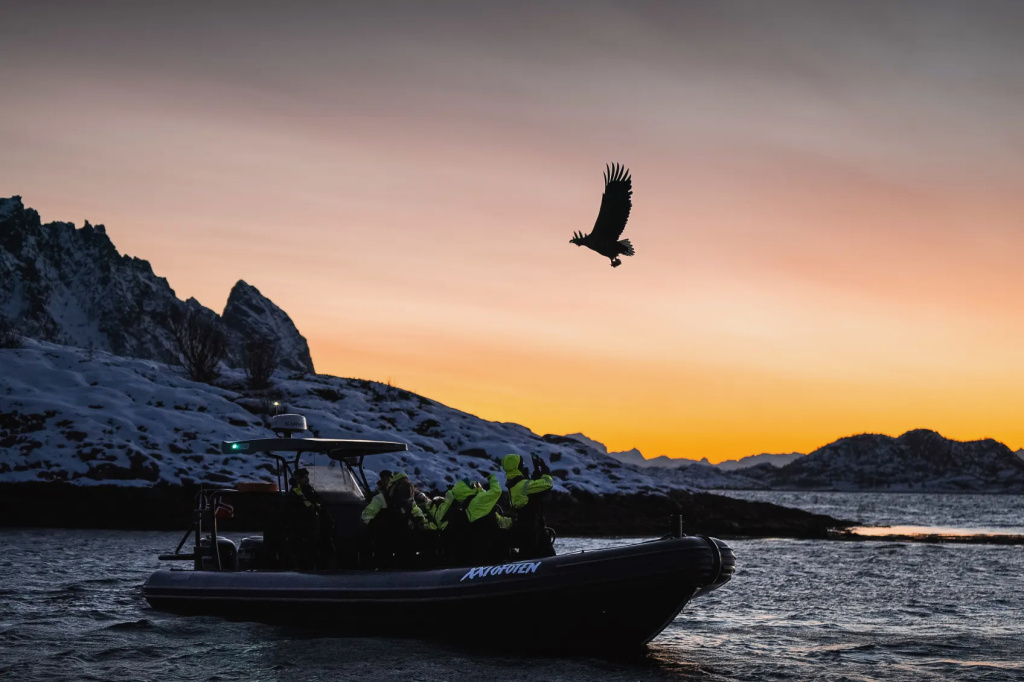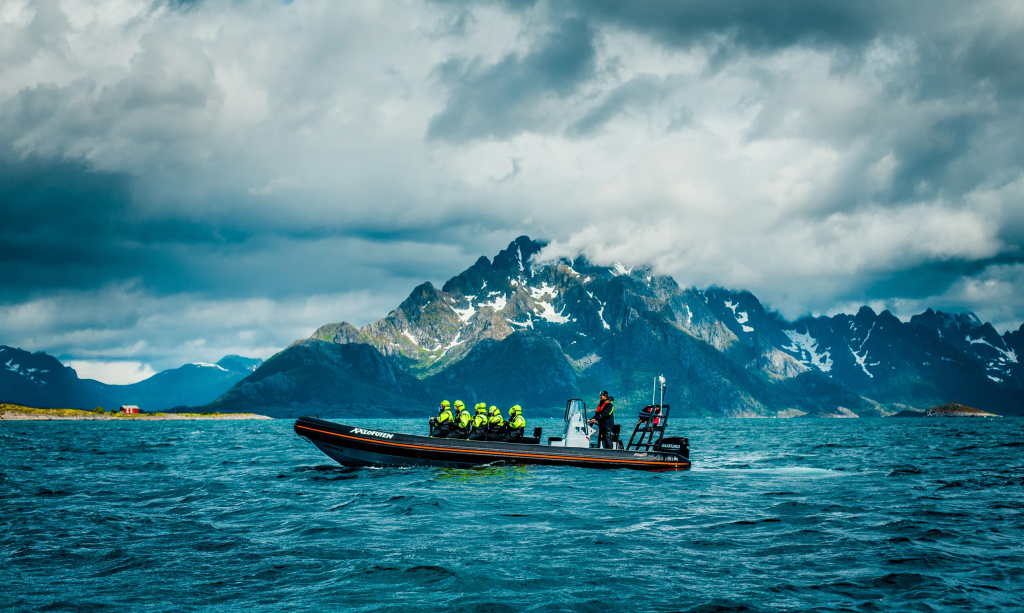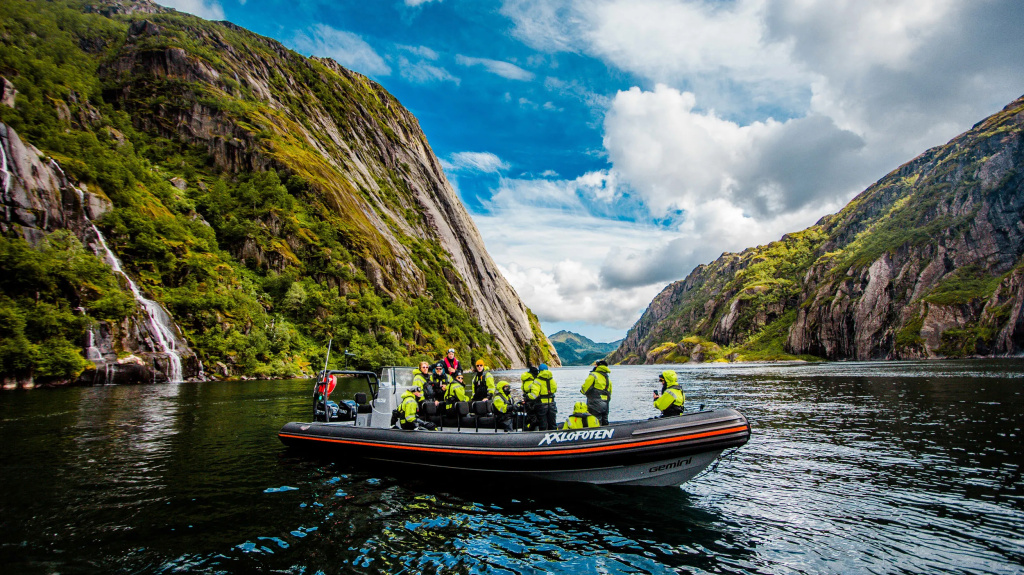Sea Eagle Safari Lofoten: Everything You Need to Know About the Sea Eagles
An in-depth look at the history and life cycle of the impressive sea eagles of Lofoten.
The majestic white-tailed eagle: Northern Europe's largest eagle
The white-tailed eagle, or "sea eagle", is Norway's largest bird of prey. With its distinctive white tail and a wingspan reaching up to 2.4 meters, the majestic sea eagle dominates the skies of Lofoten. The area boasts a large population of sea eagles, offering opportunities to observe these majestic birds up close during the RIB boat safari to magical Trollfjord in Svolvær, Norway. Despite their regal appearance, their history in Norway is a tale of survival.
Sea eagle hunting with bare hands
The practice of hunting sea eagles with bare hands in Norway, especially on Værøy Island in Lofoten, stretches back centuries. Italian priest Francesco Negri, who travelled to North Cape in 1665, was among the first to document the special methods employed by eagle hunters in Verøy.
This method of hunting involved waiting in secluded stone huts, known as eagle houses. Hunters used sheep intestines as bait, carefully reeling in the majestic birds with a rope to bring them close enough to grasp. The crucial moment came when the eagle, focused on its meal, allowed the hunter to emerge from hiding and seize it by the claws, pulling the powerful bird into the hut for the kill.
On the brink of extinction
In 1845, Norway sought to control its predator populations, including the majestic sea eagles, through legislation. This move aimed to protect livestock and supplement fishermen's incomes but signaled a challenging era for the sea eagle's survival.
Over the years, hunting practices led to a significant decline in the sea eagle population, and by 1951 the population hit a historic low.
The tide turned in 1968 when laws protecting sea eagles were introduced. Since then, the population has made a remarkable recovery, making Lofoten one of the world's most important nesting areas for these birds.
The Trollfjord battle is another significant event in the fishing history of Norway, where smaller independent fishermen went 'to war' against the first industrial-type vessels.
The life cycle of the sea eagle
White-tailed eagles stay with the same partner all their life. They build big nests with sticks, moss, seaweed and wool and each year in spring, the female lays 1 to 3 eggs. Both parents help keep the eggs warm for about 40 days until they hatch.
Baby eagles start moving in the nest after ten days and fly away after about 70 to 80 days. They become fully grown and reach reproductive maturity when they are around 5 years old.
Sea eagles typically live for about 27 years, but some individuals have lived up to 42 years in captivity. They mainly eat fish and seabirds, especially those that dive, but they sometimes eat smaller mammals (including lambs) and carrion. In rare cases, they may resort to cannibalism.
An unforgettable encounter
Lofoten's sea eagle safaris have become a must-do for visitors, offering a unique opportunity to see these birds up close. From the decks of open boats, tourists can experience close contact with nature and the elements, witnessing the majestic sea eagles and the dramatic natural beauty, especially around the legendary Trollfjorden. During the tour, visitors pass by abandoned fishing settlements, providing insight into the rich history and heritage of the area. The tour also highlights the dramatic story of the Trollfjord battle in 1890, adding an intense and compelling narrative to the experience.
Today, thanks to conservation efforts, Lofoten boasts a thriving sea eagle population. Nordland county, in particular, holds more than 35% of Norway's sea eagle population, underscoring the area's global significance for these birds.
Private tours are also available for a more personalized experience, which can be arranged at any time of the year.
Opplev havørnen på nært hold:
Sea Eagle Safari with RIB
-
8+
-
Easy
-
1,5t
Sea Eagle Safari To Trollfjorden
-
Easy
-
8+
-
2h
